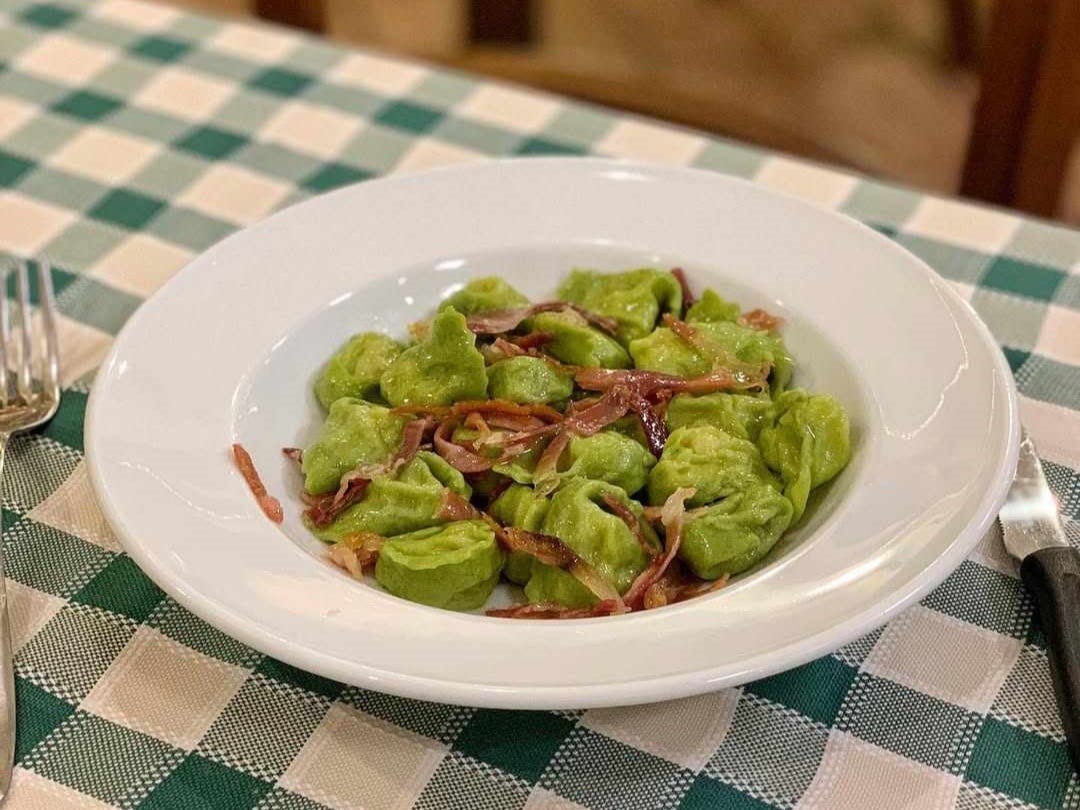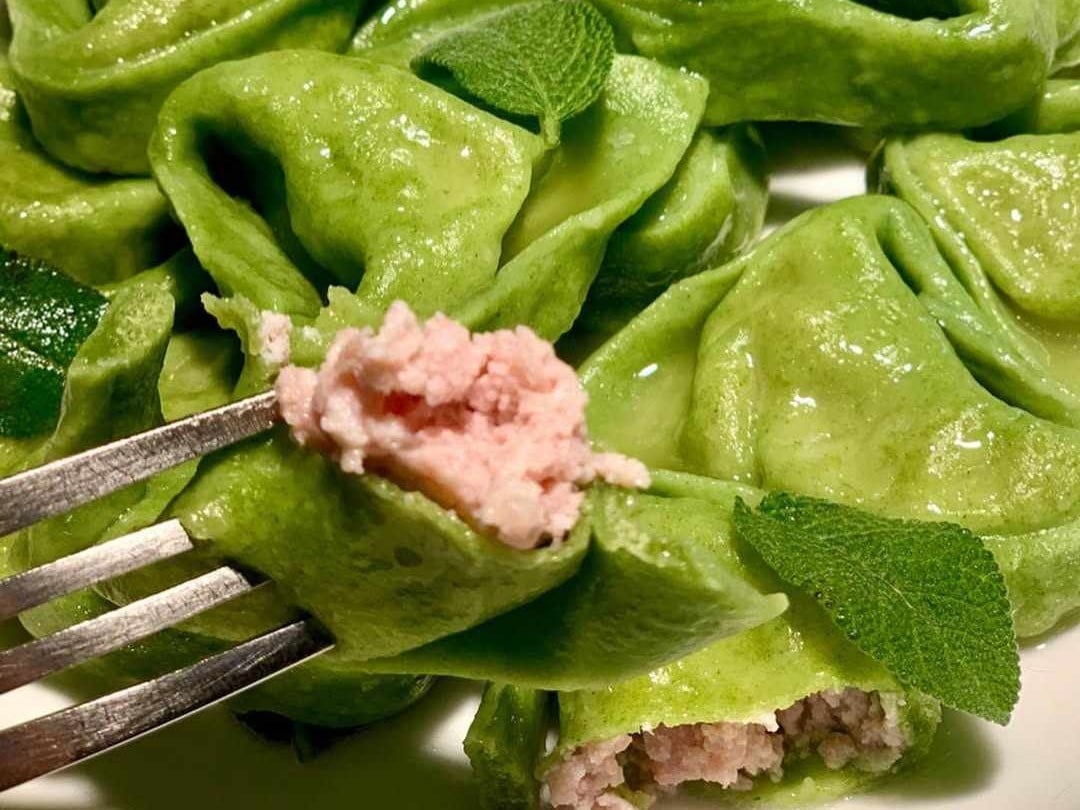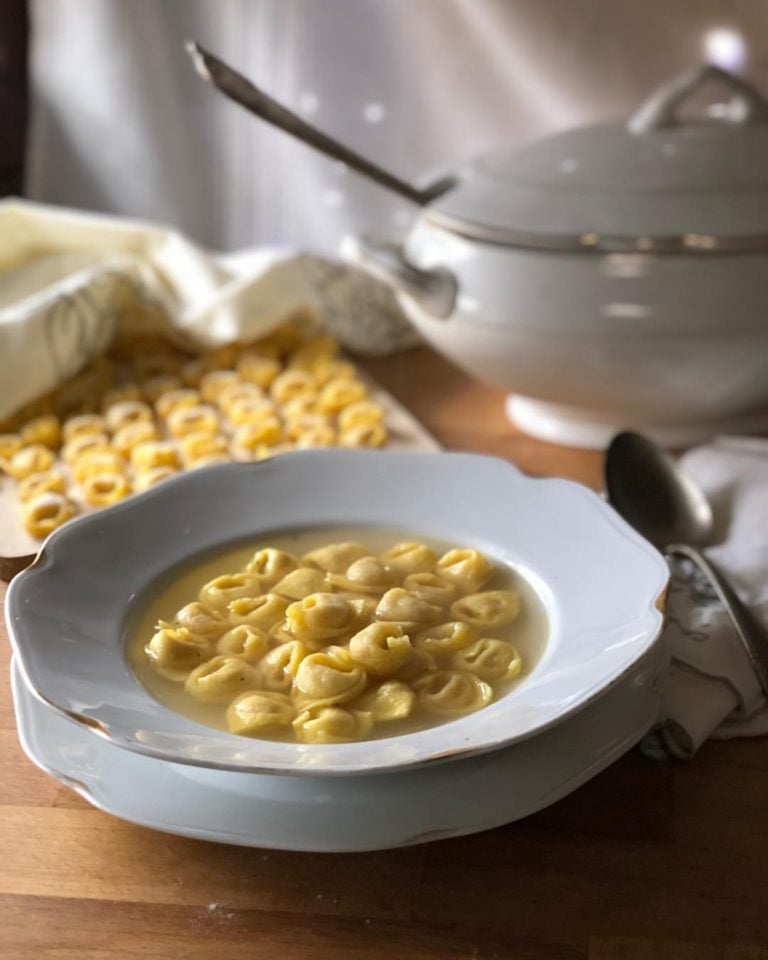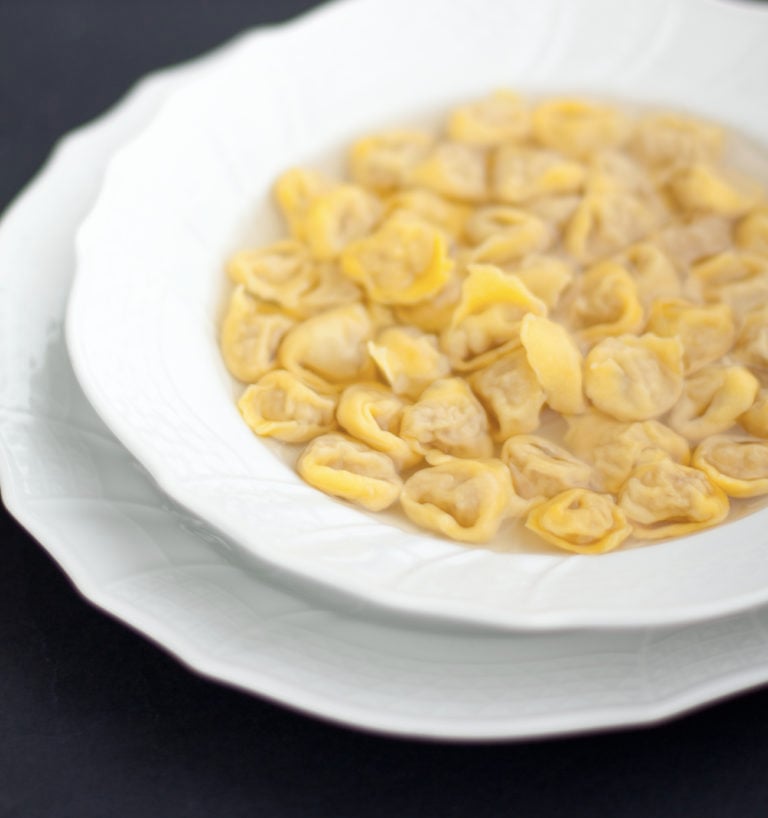There’s a fresh pasta dish that has been making its way onto the menus of traditional Bolognese restaurants for some time now, right after tortellini, tagliatelle al ragù, lasagne and tortelloni burro e salvia. It can be recognised by its bright green colour and tortellini-like shape, but in an extra-large version. We are talking about balanzoni, a fairly recent speciality that has already won over the palates of the Bolognese (and others).
So let’s find out the recipe of this tempting filled pasta, and how it has managed to claim a place on the city’s menus.
The History of Balanzoni

If we know something for a fact about the history of balanzoni, it’s that their origin is unknown. Some claim they were born after the Second World War as a salvaged recipe, others that we owe them to the creativity of a Bolognese sfoglina (pasta maker) who in the 1980s and 1990s came up with a new recipe by mixing leftover ingredients like the green sheet of lasagne and the filling of tortellini.
Regardless of its origin, we know for certain that balanzoni do not appear in the ancient recipe books. Therefore, it stands to reason that they’re a fairly recent culinary invention, which over the years has slowly found its way into many restaurant kitchens of the city.
But why are they called Balanzoni?
For the Bolognese, the name immediately brings to mind Dr Balanzone, the typical mask of the city carnival: a lawyer dressed in black, know-it-all and fussy, who never misses an opportunity to show off his culture in a pedantic and convoluted manner. Another typical feature of Balanzone is his florid appearance, which shows a great passion for food.
The link between this ancient figure from this Commedia dell’Arte and stuffed pasta is not straightforward though. It can probably be traced precisely in his relationship with food, or alternatively in the size of his hat, which is as generous as that of the tortello.
According to another theory, it could be traced back to the poor and ‘recycled’ nature of balanzoni, whose appearance seems to promise an opulent filling but is actually concealing pretty simple ingredients. Similarly, Balanzone’s knowledge creates high expectations that he is then unable to meet.
The recipe

Unlike tortellini, the recipe for balanzoni is not officially recognized. However, the differences between the recipes available online and in modern recipe books are minimal, both in terms of ingredients and preparation methods. Now, let’s find out what their filling is made of, and how the ‘green cousins of tortelloni’ are prepared according to the recipe of the Associazione delle Sfogline Bolognesi.
PASTRY INGREDIENTS
350 gr. flour
3 eggs
Cooked spinach
FILLING INGREDIENTS
300 gr. ricotta cheese
60 gr. Parmesan cheese
50 gr. chopped mortadella
40 gr. spinach
A knob of butter
1 clove of garlic
One egg
A pinch of nutmeg
Salt
How to prepare balanzoni
First you need to take care of the pastry, which owes its typical green colour to the presence of spinach (or nettle, depending on taste and season). After mixing them with flour and eggs, you should let the pastry rest for a while before rolling it out (quite thick).
In the meantime, you can prepare the filling. First put the spinach in a pan with a clove of garlic, a knob of butter, salt and a little water. Once cooked, squeeze and chop the spinach before mixing it with ricotta, Parmesan, chopped mortadella, nutmeg and egg.
Spread the filling on the pastry – previously cut into squares of about 6 centimetres per side – and close the balanzoni as if they were large tortellini. Balanzoni are usually seasoned with butter and sage; some add a little pan-fried prosciutto or dip them in a tasty Parmesan cream. The choice is yours!
Author

Maria Grazia Masotti
An eternal dreamer, but I try to stay grounded. I was raised in the countryside but I love big cities. I’m always ready for a trip, as long as it’s sustainable.
You may also like
History and recipe of the Tortellino, king of Christmas (and beyond)
by Elisa Mazzini /// December 4, 2019

Interested in our newsletter?
Every first of the month, an email (in Italian) with selected contents and upcoming events.


